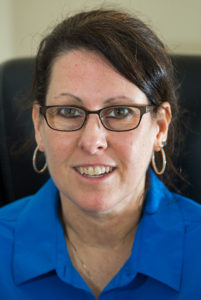By STEVE KRAUSE
Looks can be deceiving.
That’s true whether you’re sizing up a blind date or trying to figure out how healthy a person is. And it’s especially true with traumatic brain injuries — or, as they are commonly known, concussions.
“You have to remember that when you have a concussion, you look fine,” said Beth Adams of Swampscott, a neurotrauma rehabilitation specialist at Massachusetts General Hospital. “There’s no way for anybody to know what’s going on inside of your head.”

These days, Adams works almost exclusively with former National Football League players, both to evaluate them and to steer them toward treatment, if they need it, for head injuries incurred during a lifetime of violent football-field collisions. But her concern for people who get them, particularly in areas of sports where there is so much pressure, for kids and pro athletes alike, to get on the field and perform.
The issue, once clouded, is now coming into focus. All those euphemisms are now being seen for what they are.
“Getting your bell rung,” said Adams. “That’s one you used to hear a lot. There are so many variations of it.”
Similarly, there are so many variations of the actual condition too — ranging from a general feeling of woozyness to whiplash (getting your head jerked front to back, which impacts the spinal cord) all the way up to loss of consciousness, however long.
“You can have a whiplash injury,” she said. “The force in which your head snaps can justle your brain. Some people say ‘I was only hit from behind.’ But your head snapped. The force is just so intense that (a concussion) could be the outcome. It’s not always a direct hit.”
Adams first became interested in treating concussions when she was doing graduate school work at Northeastern University as a rehabilitation specialist. She’d majored in speech and language pathology at Salem State College.
“I was doing an internship in a brain injury facility where every patient there was in their 20s and 30s,” she said. “They were there for a number of reasons … motorcycles, motor vehicles, sports, and this was before anyone knew the impact (these injuries) could have.
“There were a lot of young people there, and I felt I could make a difference.”
These days, she works in conjunction The Trust, the NFL Player’s Association’s group committed to former players’ well-being. What Adams does at Mass General is help her clients organize long-term care.
“I help people navigate their medical course,” she said. “I assist NFL players only after they come through a three-day medical evaluation to understand their medical situation, and help them find the best medical care when they leave (MGH) so they can continue their care.”
Adams says that despite an enormous increase in awareness on the subject of concussions (including a movie starring Will Smith as a doctor fighting the NFL, which in the film is trying to quash his research on Chronic Traumatic Encephalopathy, a condition ex-players have developed due to repeated brain injuries). “There is so much work we have to do.”
One of Adams’ goals in the beginning of her work as a concussion specialist was “for kids to learn how to pull themselves out” of games where they have have suffered a brain injury.
“Kids who are playing sports now … if they don’t know how to pull themselves out, and coaches do not know what’s happening, it’s critical.
This can have a chain-reaction effect, she said. If children ignore, or aren’t aware of their symptoms, and the condition lingers, “now they can’t go back into the classroom.
“Kids need to thrive,” she said. “And if schools don’t know how to assess kids, we’re in trouble. It’s really important to give out education.”
Fortunately, Adams says, schools and coaches are getting the message.
“I can honestly say,” she said, “that I’m seeing a lot more people pulling kids out, and talking about it. Five years ago, we’d have never seen that. You’re seeing a lot more talking.
“Trainers are out there poised to know what they’re trying to watch for,” she said. “Now, you come right out. It’s not 100 percent, but more people are doing it now, with the understanding of what can happen when you don’t.
“Even school nurses are the first line of defense,” she said.
This is why, she says, the concussion protocols being set up at every level of sports are so important. They are conducted immediately by trainers and other officials who have been educated on the immediate symptoms of a concussion. And if the victim meets any of the outlined criteria, they are not allowed to resume playing.
“Protocol for children is always necessary.” she said.
Children can manifest symptoms in other ways, and this is something Adams discussed in the book “Head Games” by former Harvard football player and wrestler Chris Nowinski (who has spoken and conducted symposiums on concussions several times on the North Shore).
“This is a subject that’s near and dear to me,” Adams said. “When a kid looks fine, but he or she acts out in school and nobody knows why. How do you help these kids? They’re being delayed. They can’t learn because of the disruption the injury has caused. How many of us knew kids in school who were disruptive?”
She’s intrigued by her work with former NFL players, which she does almost exclusively at Mass General. In her private practice she has dealt with a wider variety of head injuries.
“Working through it is like peeling the onion,” she said. “Peeling the layers. If I can help them through that, I can help them compensate.”
As a health professional, she does not talk about people she’s treated or issues she’s not familiar with. She had no comment on allegations earlier in the spring by Giselle Bundchen that her husband, Patriots quarterback Tom Brady, had suffered a concussion last year. And she wouldn’t comment on the suicide of former NFL linebacker Junior Seau, except to say she “cringed” when she heard about it.
And through her association with former Patriots linebacker Ted Johnson, who had well-documented bouts with depression and allegations of spousal abuse stemming from head injuries, the two have become friends. But she doesn’t talk about his specific condition.
She does want to stress, as often as she can, that you cannot go by looks when evaluating the condition of a person who has suffered a head injury.
“I call the people who look fine, but may be injured, ‘the walking wounded,’” she said. “They do look fine. You don’t know until you look deeper.”
For further information on Beth Adams and concussions, visit her website at Concussionrehab.com

